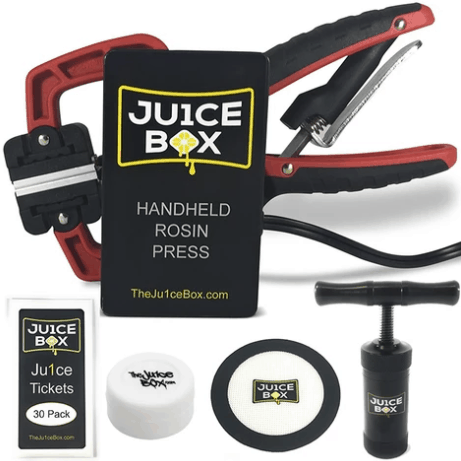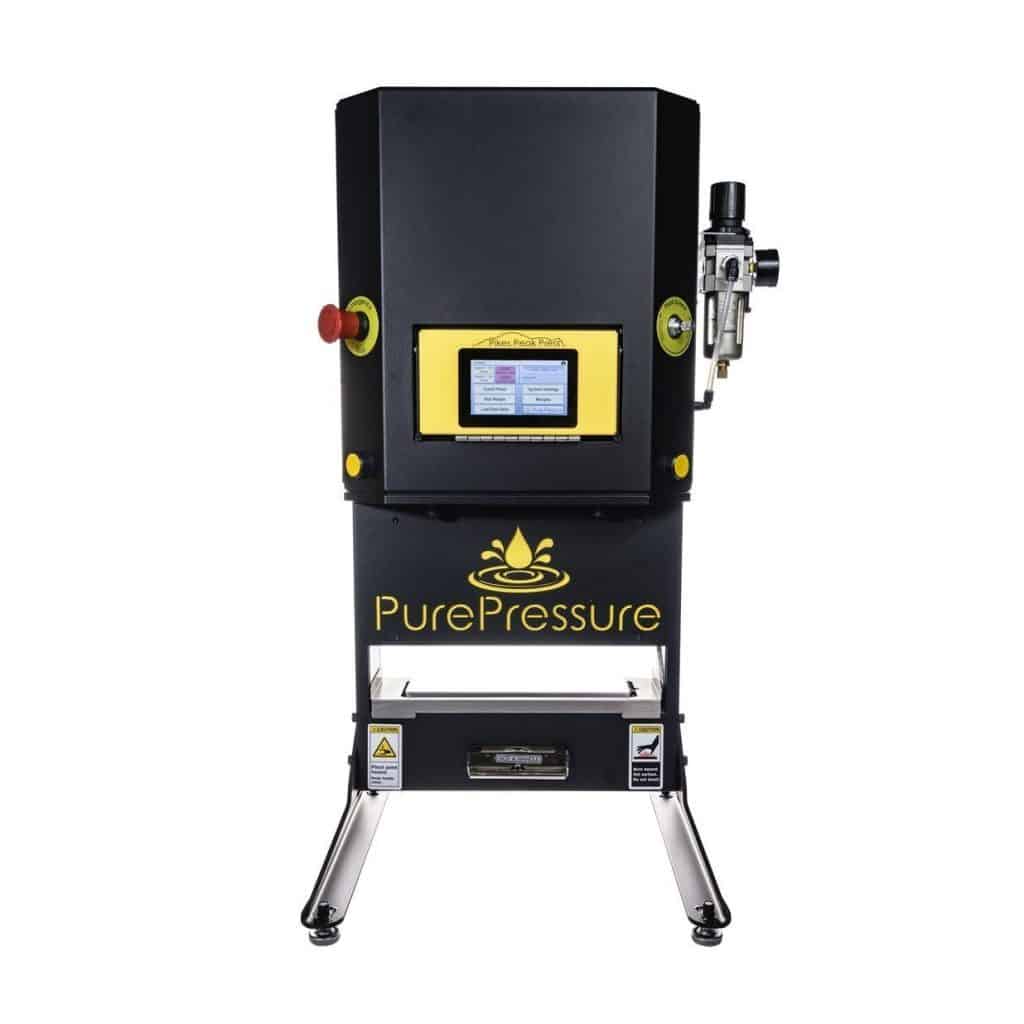If you’ve landed on this article, chances are you’ve heard about the wonderful benefits of rosin and potentially considering purchasing a rosin press to create extracts from the comfort of your own home. Or perhaps you might be looking to upgrade your current press setup.
Choosing a rosin press might seem intimidating at first, given all the choices possible. But if you know how you’re going to use it, you won’t have a problem picking the rosin press for you.
How Do You Choose a Rosin Press?
There are four (4) factors to consider when choosing a rosin press. These include the pressing method, size and shape of the plate, amount of pressure, and amount of heat.
Pressing Method
Rosin presses are categorized into four (4) types: Manual, Hydraulic, Pneumatic, and Electric.
Each rosin press type has its advantages, as well as weaknesses. You can’t say that one kind is better than the other due to the nature of how they function.
Manual Rosin Presses

Manual Rosin Presses are the simplest of all rosin presses in the market today.
You only have a heating plate and a level that you twist or pull to exert pressure on your material. These rosin presses are also quiet in operation, which makes them ideal for home use.
The advantage of a manual rosin press is that it uses less power and does not need any fancy attachments to exert pressure. They are also the most affordable kind, with some manufacturers selling kits that can be used with a shop press.
On the downside, you need to put in a lot of strength to exert pressure.
So, if you are not capable of exerting enough power to extract, you may have to ask for help from others.
Hydraulic Rosin Presses

Hydraulic Rosin Presses, meanwhile, work similar to the manual rosin press, except that it has assistive attachments like a hydraulic cylinder and hand pump and to help you in pressing your material.
Connoisseurs believe hydraulic rosin presses as entry-level presses, just above the manual press, but can still pack quite a punch. They work with minimal noise, making them ideal for home use also.
The disadvantage of hydraulic rosin presses lies in its hydraulic cylinder. Hydraulic cylinders are prone to leakages, which can cause the failure of the whole machine.
Pneumatic Rosin Presses

Pneumatic Rosin Presses are the next level of rosin presses and blurs the line between manual and more automated systems.
These rosin presses use air compressors, which allows you to increase or decrease pressure on your material with much precision. You get more control over the force of your press, which can reduce blowouts, or when the rosin bag gets ruptured.
While pneumatic rosin presses are powerful, they can be quite noisy. If you are looking to get something for home use, you better think twice about this kind of rosin press, as they are more suited for commercial or industrial use, due to the noise of the air compressor.
Electric Rosin Presses

Electric Rosin Presses are like the Rolls Royce in extraction. They are fully-automated and mostly accurate when it comes to heating and exerting pressure.
They also come in different sizes, so there’s something for you, whether you need a personal press or one for commercial sizes.
A lot of electric rosin presses offer the ability to store different settings to match the strains you often extract. That makes pressing easier, as you don’t need to guess how much pressure or heat you need for your rosin.
The disadvantage of electric rosin presses is the pressure limits. More often than not, the electric rosin presses you can find in the market today cannot exert more than 6,000 pounds of pressure.
Size and Shape of the Plate
The size and shape of the plate depends on the amount of material you will be pressing more often.
First, when the rosin flows out from your material, it needs to slide out at the soonest time possible, as the heat from the plates can affect the quality of these extracts.
Thus a small plate would seem ideal, but it will also mean you can only work on a small amount per batch.
Having a larger plate allows you to extract more and reduce the instances of unpressed plant material. But that comes at the expense of rosin sliding out slower.
That’s where having rectangular plates come in.
Rectangular plates work best when extracting large amounts of material, and they can slide out without much delay due to the short travel distance.
Amount of Pressure
Does more pressure mean much better for rosin?
Unfortunately, that is not true.
Depending on the material you plan to extract, you need to have the right amount of pressure to get the best results.
Anything below it won’t let you make the most of your material. More pressure than needed can result in blowouts, which can affect the taste of your extracts.
So how much pressure do you need?
If you are mostly pressing buds, you can use a rosin press that can provide force between 600 to 1,000 PSI.
For those extracting kief, you would want a rosin press with a force range between 300 and 700 PSI. You can use this setting for dry sift hash, although you may want to work within the lower limits.
What’s the Ideal Temperature?
The thing is, the amount of heat depends on the strain you are extracting from.
While you can experiment with the amount of the heat, you should be aware that using more heat can reduce the amount of pressure needed but can compromise the quality of the rosin.
Meanwhile, lower temperatures can produce more potent rosins but need more pressure, which is also risky due to the risk of blowouts.
If you are looking into extracting rosin from buds, you should look at heating the plates from 175 up to 240 degrees Fahrenheit. With the right settings, you can expect a yield of up to 25 percent.
For extracting hash, kief, or dry sift, you should have heating plates that can go from 170 to 190 degrees Fahrenheit. You can get up to 70 percent yields if done at the right settings.
Timing is Everything
A good feature to have on your rosin press, although optional, is a built-in timer.
Having one on-board your press helps you keep track of your rosin extracts and notify you to turn off the machine.
You don’t need to guess each time, and you prevent oxidation of your rosin.
While a timer is optional, as you can use other devices such as smartwatches and your smartphone, remember that your material can only stay good within a particular time while being heated.
That is why it will help a lot if you have a timer system integrated with your rosin press.
Final Thoughts
Now that you have the considerations in mind, you can make an informed decision when you buy a rosin press.
You don’t have to fall for any marketing hype, as you can base your decision on what you need and how you see yourself using the rosin press in the future.
Happy extracting!

